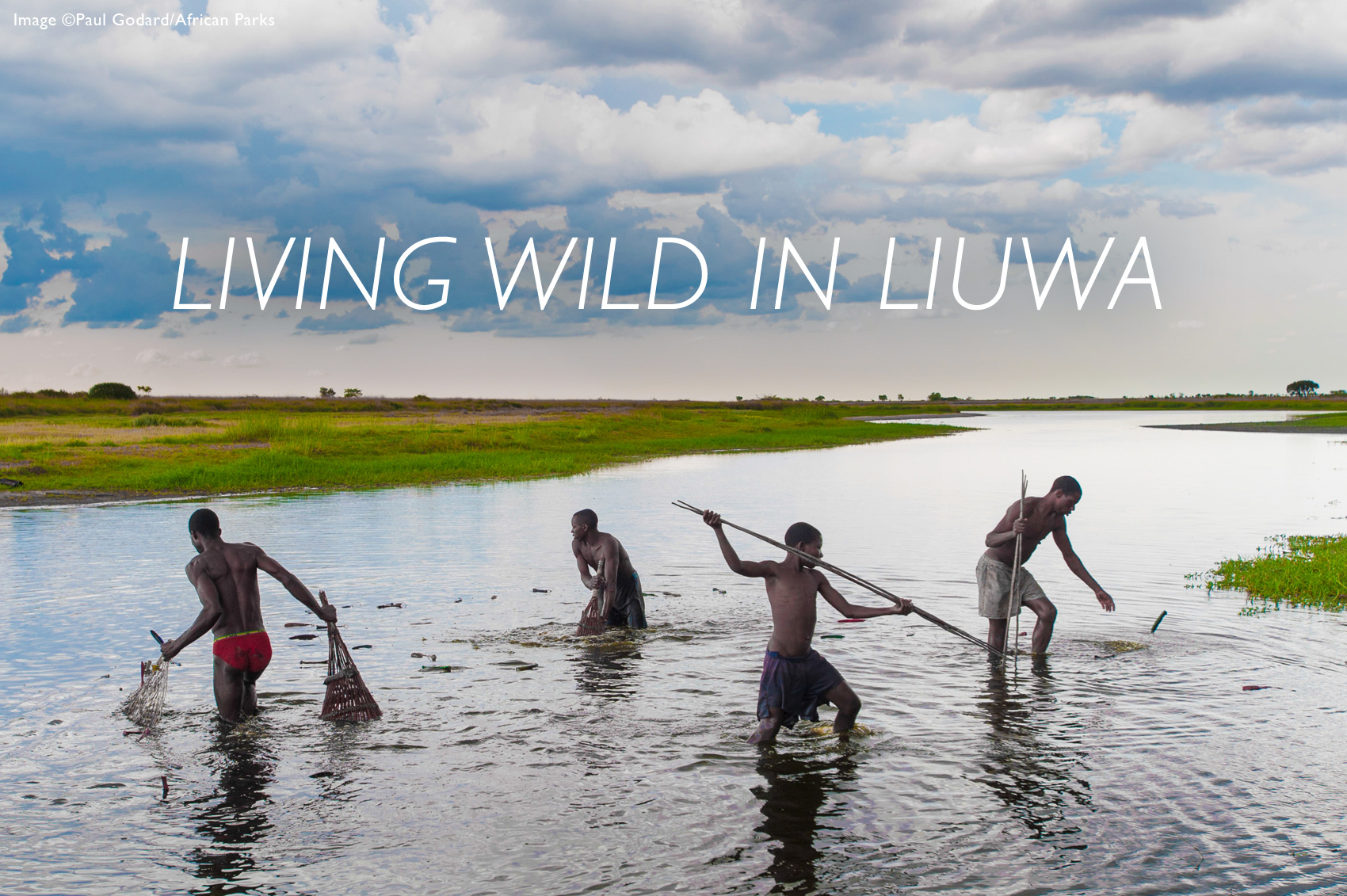
COMMUNITIES IN CONSERVATION

I have always wanted to meet Lady Liuwa, so I must admit to a touch of celebrity fever as we approached her and four other lions sheltering in the scant shade offered by a patch of shrubs. She’s clearly an older lady now, what with that gaunt face and sunken eyes, but she still has the body of a power athlete, and her eyes burned through my skull as she conducted a quick risk assessment, then flopped down to resume her siesta. The three curious cubs and their cautious mother (Lady Liuwa’s constant companion) were not so quick to relax and kept vigil until we left the scene.
Lady Liuwa put Liuwa Plain National Park on the map in the eyes of an adoring public always keen to associate with an animal heroine. Even in her twilight years, an incredible individual, she is the torchbearer for the many people who work so hard to keep the Park in shape and for the local communities who play such an important role in that regard. Perhaps she is ready to hand over her torch to the children of Liuwa – the young eco-warriors who are growing up understanding the vital roles played by animals, like lions, that were previously considered pests and exterminated on sight.
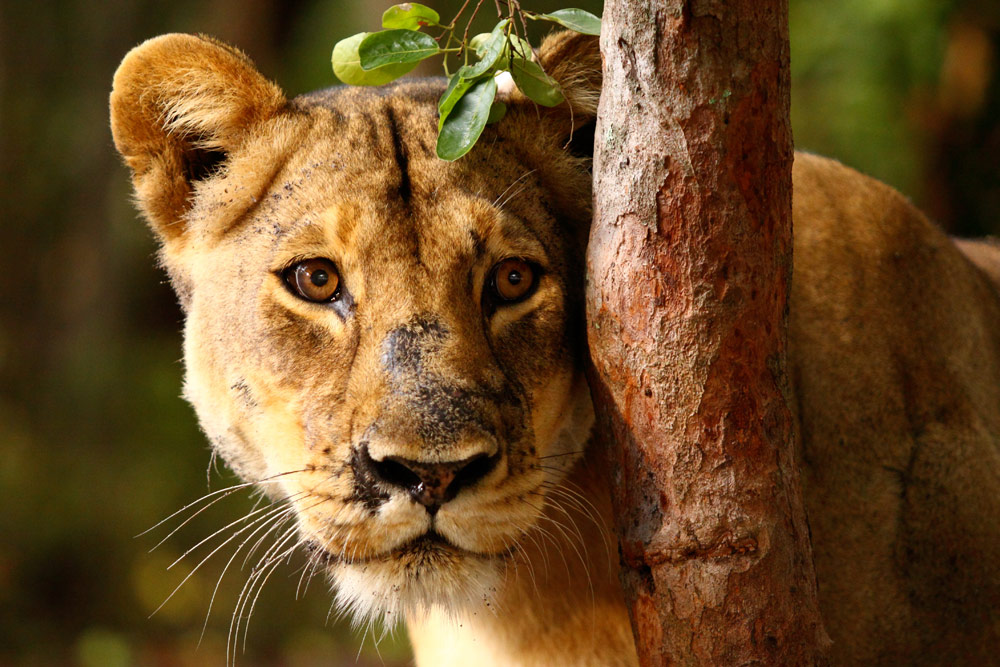
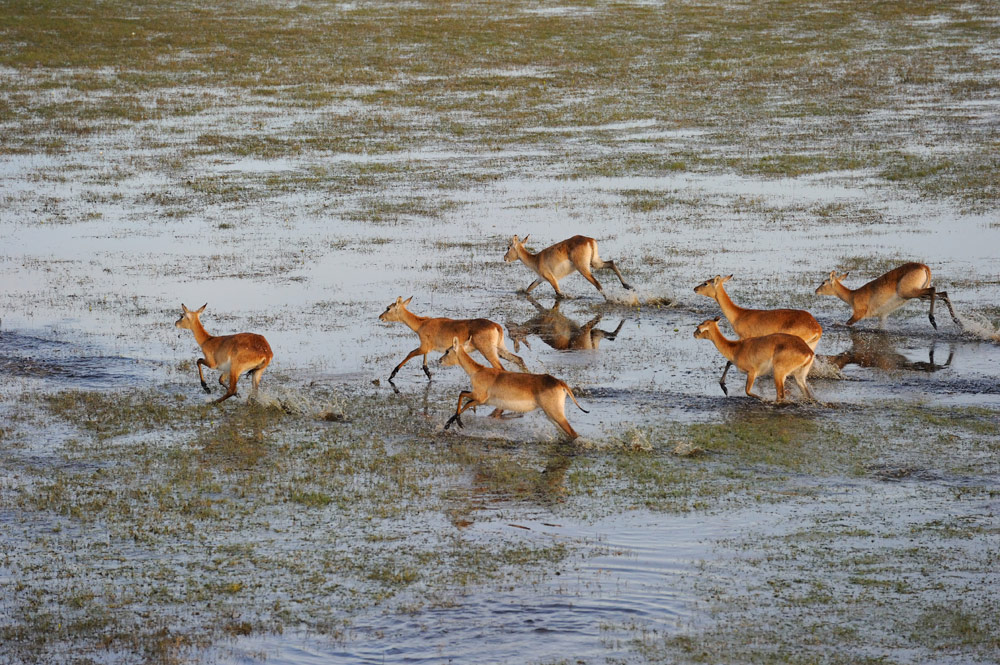
Lechwe prance through the floodplain for which Liuwa is famous. ©Lorenz/Andreas Fischer/African Parks
This is Zambia’s only National Park where communities live within its boundaries
31% of Zambia is made up of national parks (government-controlled, in which community is involved) and game management areas (controlled by chiefs/indunas), and of Zambia’s 20 national parks, Liuwa and Sioma Ngewzi are the only two that have communities living within the park boundaries. I had been invited by African Parks to take part in a lion and buffalo vaccination program and to meet some of the amazing people involved, from local chiefs (Indunas) to ZAWA officials, district councillors and the African Parks Zambia team.

Time and again, I am struck by the gulf between the perceptions of the far-away public (usually in sanitised, comfortable “first world” environments) and the reality for the people who live in Africa’s wild areas.
I enjoy most types of wild areas and tend to celebrate each for its uniqueness rather than try to compare or find fault. But on the whole, I do tend towards areas that are less frequented and less manicured for everyday tourists.
How does one describe such a place? Would that mean anything to you if I said that Liuwa ‘fed my soul’? Maybe it’s the vast open plains that span the curved horizon, or the lack of human impact, or the knowledge that for much of the year, this vast floodplain is submerged in water and inaccessible. Whatever the reasons, Liuwa is for those who have graduated from the school of Big Five and infinity pools.
One moment that encapsulates Liuwa for me was a late afternoon when we came across a group of self-drive tourists settled into their canvas chairs a stone’s throw from a small pool of water, each doing their own thing – reading, sleeping, sketching or photographing – totally absorbed, at one with the environment and themselves. They had clearly been there for a while.
Pelicans, spur-wing geese, wattled cranes and a variety of smaller water birds worked the shoreline, and a massive flock of black-winged pratincoles hawked the skies for insects, swarming like quelea over a sorghum field. The late afternoon sky behind the pool was bruised with angry thunderclouds of purple, pink and grey while shafts of sunlight exploded between them. Beyond the pool, countless zebra and wildebeest slowly made their way to the water for a later afternoon drink. The moment was at once peaceful and dramatic. We moved on silently, realising that our presence might disturb this perfect moment. We found our own moment as we enjoyed G&Ts in the fading light, surrounded by a clan of 20 curious hyenas.
I had the opportunity to visit one of the public campsites called Kwale. This is rough and remote camping for the intrepid 4×4 driver who is totally self-reliant. There is cool shade under large trees, cold showers, flush toilets and a camp attendant, but that’s all and it’s wonderful. I chatted to Siyoto Siyoto Derrick, or just “Derrick”, a humble and proud man who runs this neat camp. He proudly pointed out a pair of brown (Meyers) parrots nesting in the campsite trees and showed me how to use the manual water pump.
This is rough and remote camping for the totally self reliant
There are four community-run campsites in the park, all charging US$15 per person per night – which goes towards the upkeep of the campsites and anti-poaching efforts. African Parks has plans to build a luxury lodge in Liuwa that will be operated by Norman Carr Safaris for five months of the year when the water in the park has receded. This year, while the luxury lodge is being constructed, Norman Carr Safaris is operating the existing re-furbished and revamped Matamanene Camp, located in an area of the park where the lion pride is regularly seen, much to the delight of guests. African Parks also has plans to build self-catering accommodation in Liuwa that will be managed by the park team. The legendary walking safari expert, Robin Pope, has been leading safaris to the area for many years and will continue to do so. Robin and I shared a tent during this expedition, and he was a fountain of information and anecdotes that gave me a wonderful insight into one of Africa’s least-known and newest tourism areas.
Probably the most defining moment of the trip was a visit to Lumei Primary School and other primary schools in and around the park – this really connected the dots for me between Lady Liuwa, this vast ecosystem and the people that depend on it.

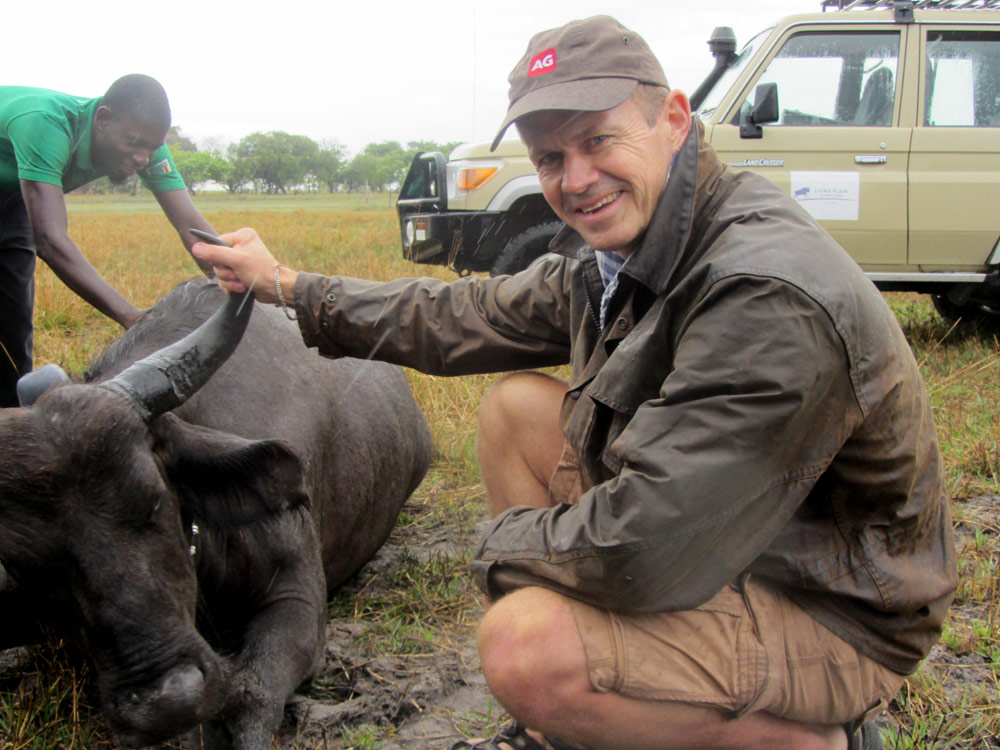
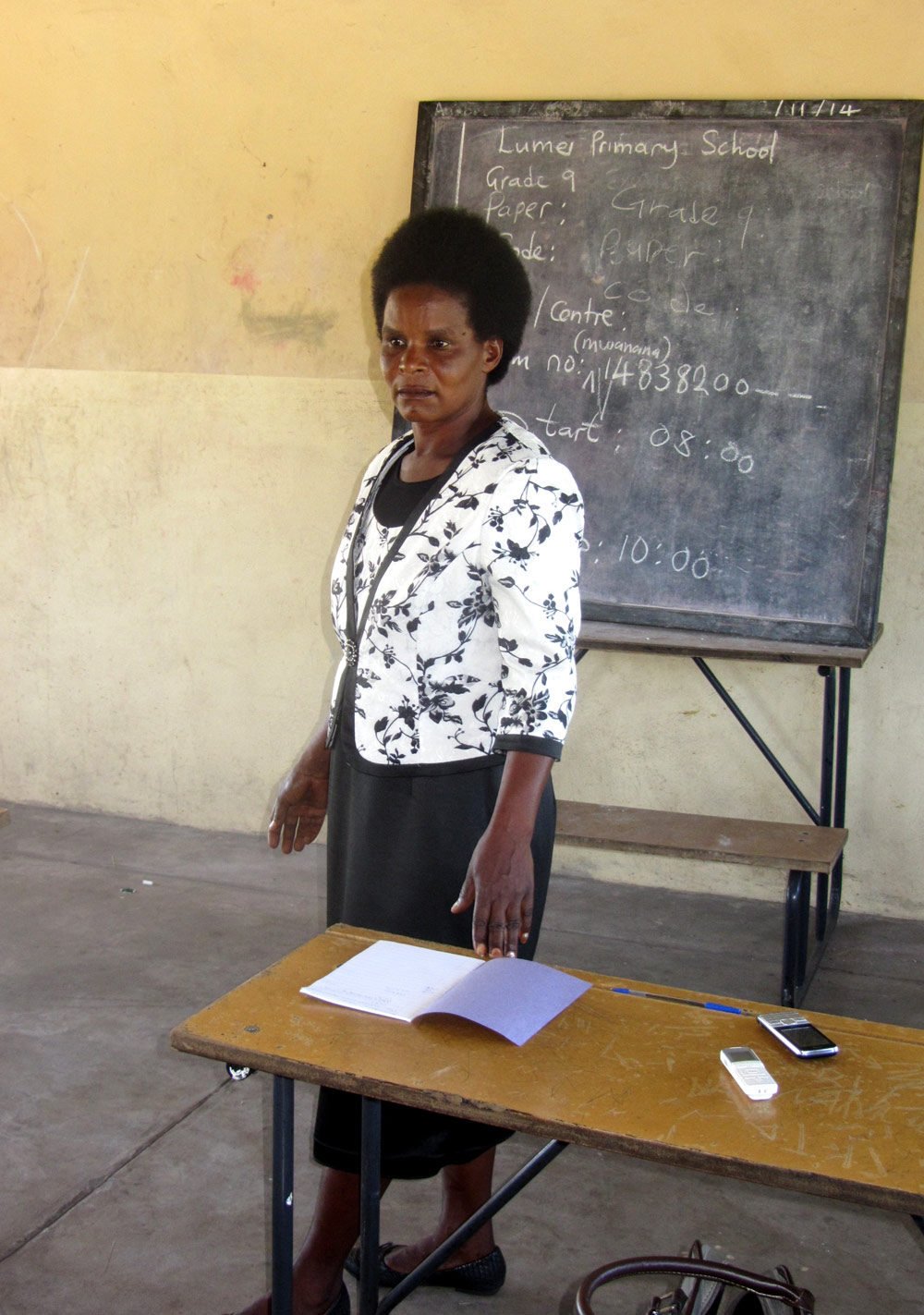
The determined headmistress of Lumei Primary School, Ellen Kakunda. ©Simon Espley
School children form clubs to educate parents and communities about conservation
The school is remote, and the drive took 3 hours each way. Until the school was built in 1997, children had to walk 1 ½ hours each way to another village school to get their education. Lumei Primary School has 300 pupils between the ages of 7 and 17 and 4 teachers under the firm guidance of Headmistress Ellen Kakunda. It’s a tough job because parents want the kids to help with chores such as tending livestock, working the fields and cutting papyrus reeds. Other challenges include providing food, clean water and educational material for pupils.
I was taken with Ellen – her dignified but firm demeanour demanded respect, and her sense of determination filled me with hope.
Another significant issue is that ZAWA requires a minimum of grade 12 for students wishing to qualify as park scouts. To this end, African Parks has a scholarship program at the distant Kolabo High School for promising pupils from Lumei and other Primary Schools in and around the Park. African Parks also promotes an environmental education program with 18 schools in the area, whereby children form conservation clubs to educate and sensitize their parents and communities towards conservation issues. It was on learning this concept that my mind did backflips, and the dots connected. Worldwide there is a huge need for education of this nature – and here, the children are doing that job. All that youthful energy harnessed for a great cause!
We saw countless villagers preparing fields for crops and tending their cattle during the drive to and from the school. How do you explain to them that re-introduced buffalo that come to eat their crops should not be killed and that they should rather change their farming ways so that the buffalo won’t target their crops? How do you explain that lions are vital to the survival of the entire park and surrounding areas and their own lives? The best way, surely, is for the younger generations to educate the older.
The rains arrived during my last few days in Liuwa, and overnight, the plains became a maze of flowers of all shapes and sizes. Wildebeest started arriving from much deeper in the park (Liuwa is home to Africa’s second-biggest wildebeest migration). The next cycle of life in this wonderful place commenced. Within months the entire area will be flooded (where do the burrowing animals, reptiles and insects go?), and the humans will undertake their own migration, the famous Kuomboka ceremony, as the Litunga (the king) leads his people to high grounds near the town of Mongu.

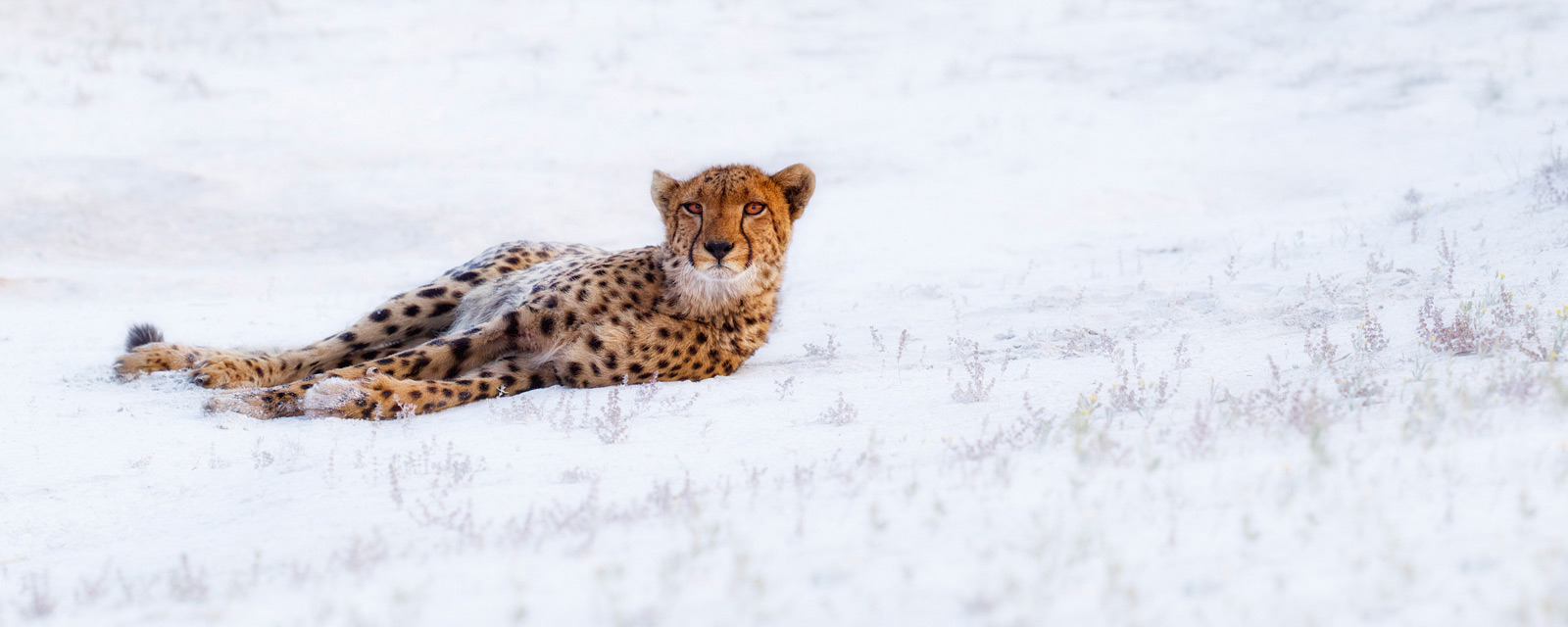

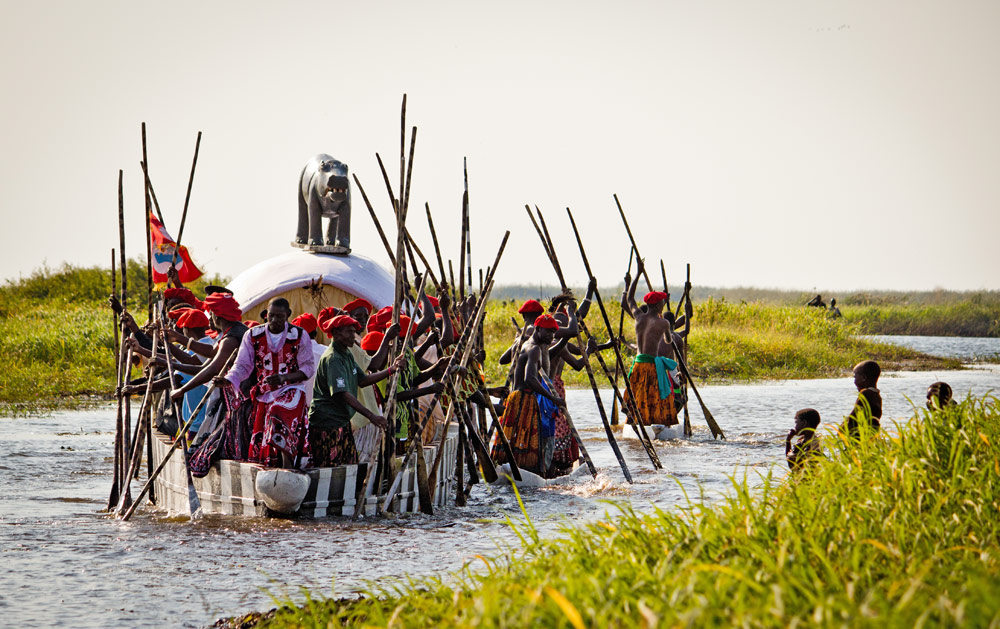
A ranger stands on his motorcycle to get a better radio signal. ©Paul Godard/African Parks.
Indunas lead their people to higher ground during the annual Kuomboka ceremony as the plain floods. ©Noeline Tredoux/African Parks
The bond between communities and the wild animals they live with is not always respected
As my homebound plane rose above the vast plains and a different perspective settled in, I considered the challenges of keeping these remote areas safe from poaching and human expansion. I pondered the powerful bond between local communities and the wild animals they live with, a bond not always appreciated or respected. I thought of the many people I had met during this wonderful adventure and of the incredible landscape and hardened inhabitants.
There is no doubt in my mind that Liuwa is in good hands with African Parks, Zawa and the Barotse Royal Establishment. But there is little doubt that those of us fortunate enough to enjoy the comforts of modern society have to undergo a quantum leap to redefine our perceptions – even to begin to understand the plight of the communities that live in Africa’s wild areas and the reality of the task at hand. Every time I think now of Lady Liuwa, I think too of the communities with which she shares her domain and the children who are set to take over that torch for Liuwa Plain National Park.
For accommodation options at the best prices, visit our collection of camps and lodges: private travel & conservation club. If you are not yet a member, see how to JOIN below this story.
Contributor
 SIMON ESPLEY I am a proud African of the digital tribe, and honoured to be CEO of Africa Geographic. My travels in Africa are searching for wilderness, real people with interesting stories and elusive birds. I live in Hoedspruit, next to the Kruger National Park, with my wife Lizz and 2 Jack Russells. When not travelling or working, I am usually on my mountain bike somewhere out there. I qualified as a chartered accountant but found my calling in sharing Africa’s incredibleness with you. My motto is “Live for now, have fun, be good, tread lightly and respect others. And embrace change”.
SIMON ESPLEY I am a proud African of the digital tribe, and honoured to be CEO of Africa Geographic. My travels in Africa are searching for wilderness, real people with interesting stories and elusive birds. I live in Hoedspruit, next to the Kruger National Park, with my wife Lizz and 2 Jack Russells. When not travelling or working, I am usually on my mountain bike somewhere out there. I qualified as a chartered accountant but found my calling in sharing Africa’s incredibleness with you. My motto is “Live for now, have fun, be good, tread lightly and respect others. And embrace change”.
To comment on this story: Login (or sign up) to our app here - it's a troll-free safe place 🙂.![]()






